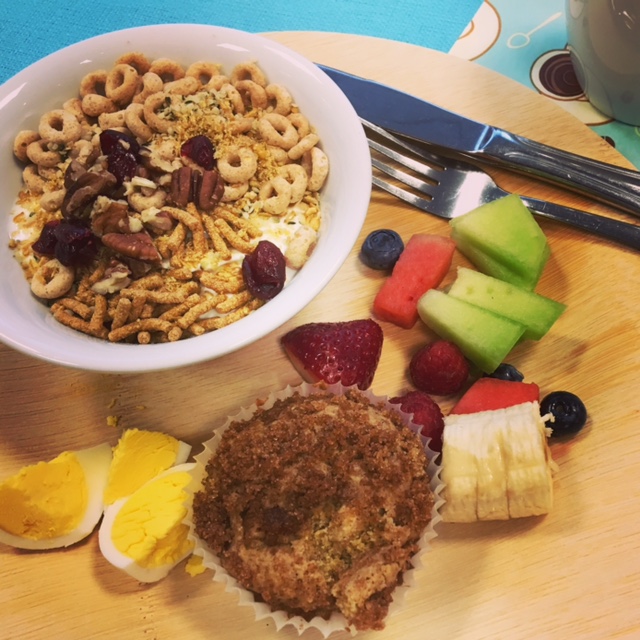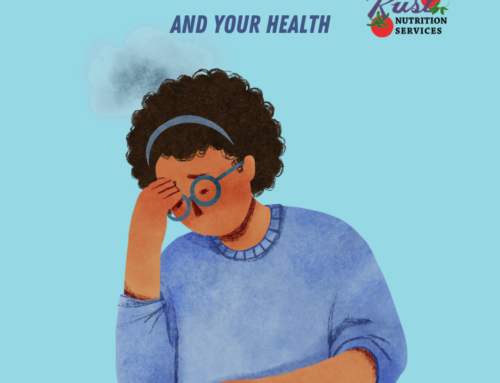We enjoy a variety of breads and grains in our kitchen since nobody in my household suffers from gluten intolerance or Celiac Disease. As I’m sure you are aware “Gluten Free Diets” are very popular these days, even among those who physiologically have no intolerance to gluten. There is popular belief that gluten is bad for all – this is not true. Unless you have Celiac Disease or non-celiac gluten sensitivity (NCGS), there’s no evidence that shows any health benefits to avoiding gluten. It’s estimated that anywhere from 1 in 100 to 150 people have Celiac Disease (once properly diagnosed, seek nutrition care). This also means that 99 of 100 people don’t have a problem with gluten.
What is gluten?
Gluten is a protein that is found in wheat, barley, and rye. These grains contribute fiber and important vitamins and minerals to the diet. Wheat is actually higher in protein and lower in carbohydrate than other cereal grains (like corn or rice). People with Celiac Disease (a disease of the small intestine) can’t properly digest gluten.
Over recent years, awareness for Celiac Disease has increased and in 2013 the FDA reviewed the labeling regulations for “Gluten Free” products to ensure they are clear of gluten. On a recent trip sponsored by General Mills, I learned they revised the way they package Cheerios® to ensure the product is completely gluten-free (Cheerios® are made with oats, which are gluten-free, but the new FDA guideline requires insurance that no gluten was touched through processing and packaging).

Oat & wheat cereals with nuts and dried fruit over yogurt. Breakfast cereals improve dietary profiles, so enjoying cereal with milk in the morning can ensure the intake of nutrients of concern (those often lacking in the typical American diet – Vitamins C, A, D and the mineral calcium)
Are you avoiding gluten for no good reason?
It’s understandable, if you have some belly aches or gastrointestinal distress from time to time, you may think “Hmn, I wonder if going gluten-free will help?”
The problem with elimination diets, is that it’s difficult to determine exactly what aspect of the foods you eliminate brings the change (in how you feel, or your weight for instance). The other risk you take when eliminating foods or food groups is nutrient deficiency or imbalance.
If you substitute an egg and fruit (~150 calories) for the 300 calorie bagel you used to have for breakfast; or you eat a salad with tuna (~150 calories) for lunch instead of a tuna salad sandwich (~300 calories), you’ve created a calorie deficit, and therefore some weight loss. If someone removes all of the wheat products from their diet however – no toast, bagels, buns, pasta, wheat or bran cereals, or rolls with dinner – it may also result in vitamin deficiency.
At the end of the day, calories do matter, and it’s the calorie deficit – not the avoidance of bread or wheat – that promotes weight loss. You can however balance the carbohydrate, protein and fat in your diet, while including bread and grains.
If You Don’t have Celiac Disease, Don’t Avoid Wheat!
Wheat is a member of the grass family, and wheat flour is the most widely used grain in the United States, therefore has the potential to provide a lot of nutrients as well as fiber to the American Diet. Wheat products such as whole wheat breads and grain products such as wheat cereals, whole wheat couscous and pasta, all provide fiber to the diet. These foods also help create delicious and enjoyable meals!
Many studies have shown the benefits of consuming grains. Including whole grains in the diet may reduce your risk for heart disease and certain cancers. There are a variety of ways to include whole grains in the diet which may include consuming whole grain breads, whole grain cereals, brown rice, and whole wheat pasta.
In addition, cereal and bread products are fortified with vitamins and minerals (nutrition professionals know these added micronutrients as “nutrients of concern” – which means that a large part of the population are at risk for not getting enough of these nutrients in the diet).
Some may ask – Why fortify or enrich?
“If cereals or flours made with wheat don’t have folic acid in them, why add it? And if milling removes some vitamins, why process them?”
There is a good reason we fortify some foods with certain vitamins and minerals – it’s an effective way to reach a large population and prevent deficiency. For instance, since 1941, we’ve been enriching refined grain products with iron and three B vitamins (thiamin, niacin and riboflavin). Years ago, many people suffered from deficiency diseases such as beriberi and pellegra. These two diseases are corrected simply by ensuring there is enough thiamin and niacin in the diet. In 1998, folic acid was also added as part of the enrichment process after it was determined that a diet deficient in folic acid (another B vitamin) was connected to birth defects, specifically neural tube defects.
Enriching common food products with these essential vitamins is a safe and simple way to ensure public health across the board. These essential vitamins are added to foods that everyone has easy access to.
Final Word
If you are suffering from gastrointestinal or other medical problems, you should follow up with your doctor. If you have a confirmed disease, diet therapy is important, and you should see a registered dietitian who is trained in that area. In any case, chew the facts about gluten and wheat. If you don’t have Celiac Disease or NCGS, enjoy variety in your diet!
*Updated May 30, 2017




